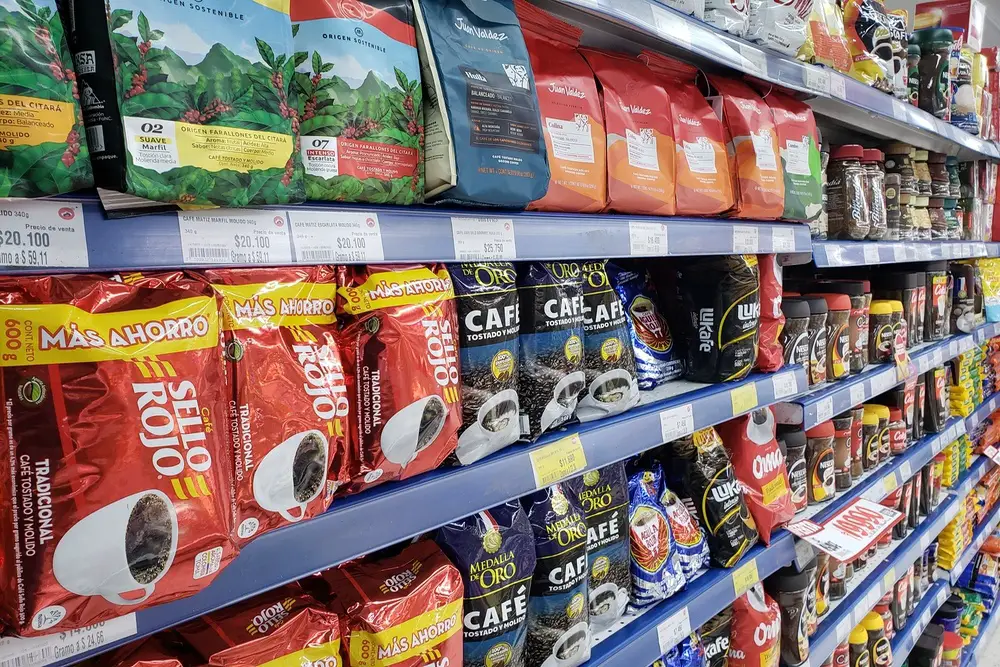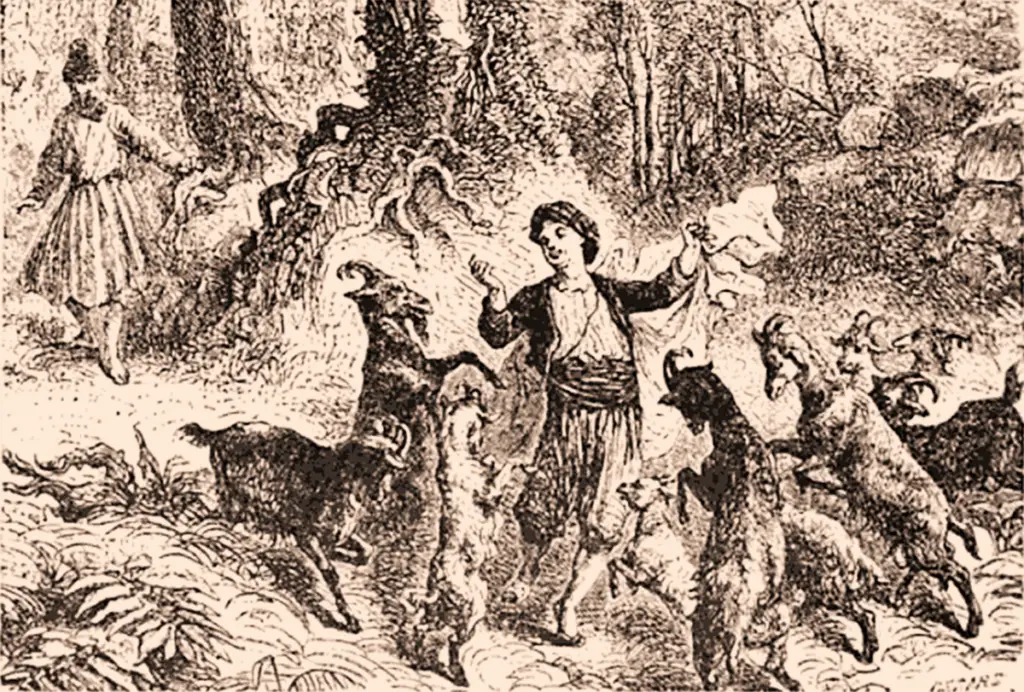Until a few years ago, little or nothing was known about the coffee grown in Burma (also known as Myanmar).
However, now this coffee is attracting the attention of the specialty coffee industry as its unique taste makes it excellent for making excellent quality coffee beverages.
Table of Contents
Origin of Burmese coffee
Coffee was first introduced to Burma by British settlers in 1885 when missionaries established a few small farms around the town of Pyin U Lwin.
Commercial coffee cultivation was not very successful at first. When the British left the country after the country gained independence in the mid-20th century, the coffee business fell into a kind of forced slumber.
This is because most of the coffee in the Asian country was grown in the Kachin, Mandalay, and Shan regions, which in turn are near the borders of China, Laos, and Thailand.
In other words, it seems that for years these bordering countries sold Burmese coffee as if it were their own, which is why hardly anyone knew the country’s coffee potential.
Burmese coffee cultivation
The climate in the highlands of Burma is characterized by hot days alternating with cool nights, which is ideal for coffee growing.
The relatively easy predictability of the weather allows for natural processing of the crop.
Nearly 80% of Burmese coffee is Arabica and is grown in the country’s northern highlands.
In contrast, Robusta and Liberica coffees are mainly grown in the lowland areas of the south.
In addition, around 80% of the Asian country’s coffee production is produced by small farmers.
The remaining 20% of the annual harvest comes from large private coffee farms.
Characteristics of Burmese coffee
In recent years, Burma has started to produce large quantities of good quality Arabica coffee alongside the traditional Robusta coffee, which is considered to be inferior.
A good Burmese coffee is characterized by:
- Intense roast
- A good body
- Sweet aroma
However, Burmese coffee is not yet widely recognized in specialty and gourmet coffee circles, perhaps because it was completely unknown until recently.
However, those who have tasted Burmese coffee claim that it tastes similar to some gourmet coffees from Brazil.
Other characteristics of Burmese coffee
Burmese coffee is also known for its strong body and almost oily, earthy texture similar to Indonesian coffee.
Also, Burmese coffee sometimes has a strong and somewhat aggressive taste, sometimes even with a hint of garlic.
On the other hand, Burmese coffee is increasingly used by coffee roasters to make blends because of its ability to enhance the body of the final product.
Thanks to its strong flavor, Burmese coffee is also increasingly being used to make espresso.
Coffee growing areas in Burma
The Mandalay and Shan regions are the areas where most coffee is grown in Burma, but recently other regions such as Kachin have also started growing coffee.
So, it is known that in the Mandalay region most of the farmers own large farms and produce washed coffee, that is, this is the most industrially developed area of the country.
In fact, there are several groups at the forefront of Burma’s specialty coffee movement, including the Mandalay Coffee Group (MCG), a coalition of 50 export companies.
In contrast, almost all coffee farmers in the Shan region are smallholders with less than 1 hectare of acreage.
Due to the large number of small communities selling coffee, the availability of the beans and the characteristics of the coffee itself can vary widely.
So, when we talk about Burmese coffee, we actually mean several types of coffee.
The Burmese coffee trade after independence
Between 1950 and 2000, the coffee trade developed only on a small scale, mainly because the British tradition of drinking tea lived on in Burmese society and coffee was therefore rather exotic.
However, in recent years, several organizations have begun to focus more on the coffee trade as the country’s economy has opened up to the world.
Both private entities and NGOs have worked with farmers to monitor and implement measures to improve harvesting practices, resulting in more competitive production.
As a result, several investments have been made in the comprehensive training of those working in the Burmese coffee industry.
And those investments appear to be having an impact, with the sector doubling production in less than two decades.
Now the conditions are in place for Burmese coffee to compete with specialty coffees from other Asian countries such as Laos, Vietnam and Indonesia.
Investing in the Burmese coffee sector
Prior to 2019, specialty coffee was virtually non-existent in the Asian country, and the few coffee farms that existed were selling low-grade coffee, better known as pasilla.
It is even said that for a time farmers were close to giving up growing coffee altogether, as they received so little money for the beans they harvested that they sometimes gave them away.
Also, the little infrastructure that allowed at least a small part of the coffee production was owned by the government in Pyin U Lwin.
Thus, the coffee produced was mainly sold to China and Thailand through unofficial channels, resulting in farmers receiving little or no money for their crops.
The Impact of Political Instability on Burmese Coffee Production
The difficult political situation and constant unrest in Burma are a major setback for coffee production.
Because the persistently unstable security situation in the country makes the marketing of the coffee unstable.
For this reason, the United States Agency for International Development (USAID) has allocated funds to strengthen the coffee value chain and rural development in Burma.
For example, the Burmese coffee sector has received various financial support directly from the US and not from the local government.
And it appears that this aid has had the expected effect, as for the first time Burmese coffee has been produced on a large scale and efficiently.
The latter also because a large part of the funds went into training the farmers in better cultivation methods.
The meteoric rise of the coffee industry in Burma
By the end of 2019, several Burmese coffee roasters had entered various specialty competitions in what can only be described as a meteoric rise in the coffee industry.
In fact, some young Burmese are interested in coffee production.
The development of the Burmese coffee industry has even progressed so far that there is now a Burma Coffee Association (MCA), which organizes an annual coffee specialty competition in the city of Yangon.
Also, in the same year there were already at least five drying mills across the country, boosting the total annual production, which was estimated at around 3,500 to 4,000 tons of coffee.
However, other official estimates already spoke of more than 7,500 tons, of which between 400 and 500 tons were exported to the following countries:
- United States
- Canada
- United Kingdom
- France
- Singapore
- Australia
- Russia
- South Korea
Meanwhile, Burma’s domestic coffee consumption also rose sharply, even matching foreign consumption with a total of 500 tons in 2019.
The remaining production was mainly sold to Thailand.
The present and future of Burmese coffee
The growth of Burma’s coffee industry is arguably an unprecedented phenomenon.
However, such rapid growth can also present major challenges. The industry’s production capacity has exceeded the country’s weak infrastructure.
In addition, the coffee farmers had to regularly turn to banks to finance the costs of the harvest.
The problem is that Burma’s banking system is practically new, so it’s difficult to predict whether it will be able to withstand the demands of farmers.
However, the future is very bright for the Burmese coffee farmers who have already overcome all possible obstacles to enter local and international markets.
in the major cities of Burma, especially in Yangon , and even some foreign chains are looking to invade the country.
Further development of Burmese coffee
The local Burmese coffee producers have brought their product up to date with the latest technology.
This means they are trying to offer a competitive coffee that meets the demand of a new and growing community of specialty coffee lovers in the country.
Likewise, many Burmese coffee producers dream of entering foreign markets and are working to develop an emerging niche export market.
Because Burma is unlikely to match the production of coffee powerhouses like Vietnam, Burmese coffee farmers are targeting a different market segment.
In other words, Burmese coffee farmers want to get into the business of quality, not quantity, and more and more coffee farmers are taking the plunge.
Currently, good quality Burmese coffee is almost 50% for domestic consumption and 50% for export.
However, there are already voices fearing that what happened to other high-quality coffee exporters will happen in Burma in the near future.
In other words, most of the production is for export, while low-quality coffee is imported to meet domestic demand.
Rely on local talent in Myanmar
Finally, it should be mentioned that several small producers, but also large companies in the sector, try to train baristas.
This is done with the aim of providing job skills to unemployed people.
In this way, the disadvantaged population is also involved and an attempt is made to create employment opportunities and improve the quality of life in the community.




